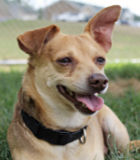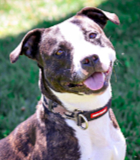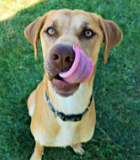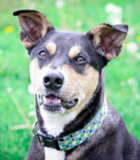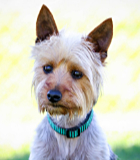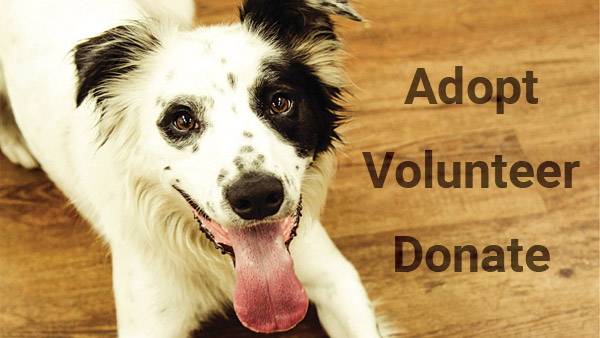PUSHY PUPS
- This topic has 0 replies, 1 voice, and was last updated 15 years, 3 months ago by
Mackenzie’s Admin.
-
AuthorPosts
-
January 23, 2009 at 2:52 am #328
Mackenzie’s Admin
MemberDethroning the Canine King
He decides where you go on walks, when and how long you play, and what side of the couch you sit on. He interrupts phone conversations and charges into new environments ahead of you. No, he’s not an overbearing spouse or fast-track coworker, he’s your dog. And without an immediate attitude adjustment, this four-footed despot will be barking “Off with their heads!” in no time.
Pushy canines come in all sizes, from the Lhasa apso who will not let you make the bed to the Rottweiler mix who grabs hold of your arm (with his teeth) when you attempt to leave the park before he is ready. Many of these dogs are bold and overconfident and relish dominating both people and other dogs. Some are reluctant leaders who take charge in a family when no one else assumes the mantle of pack leader. Most are males, although females swell the ranks as well. Whatever the size, sex or situation, these pretenders to the throne need to be put in their place via a benign yet effective leadership program.
First, you’ll need to establish rules, and ensure that all household members are willing to comply with them, because consistency is crucial. Pushy dogs do not have furniture rights. They must stay on floor level and sleep on dog beds, not human beds. Family members should not descend to floor level to wrestle with the dog but, rather, involve him in play where he follows the rules—or the fun ends. A game of Frisbee™ or fetch, in which the toy is returned to hand, is ideal.
No Free Lunch
A pushy dog needs structure. Obedience training can give both parties a common language through which to communicate. Once the dog knows “Sit” and “Stay/Wait” commands, these can be used frequently: during dinner preparation to control counter surfing and begging; before exiting homes, elevators or cars, when the dog wants to claim new territory ahead of his handler; and to accomplish tasks such as grooming and feet wiping, which most bossy dogs disallow.Teach a long “down in place” for some peace and quiet during and after dinner, and feed the dog after all humans have dined, as a gentle reminder of his ranking in the family pack. Make the dog work for every treat, and exercise him on a schedule. Going out should not be his for the asking. It is imperative to take into account the dog’s development stage and activity level when establishing a schedule that will meet his needs.
Leader of the pack
While out walking, take charge by using controlled walking and heeling commands. Give the dog plenty of feedback on his performance, praising the good and warning him before he gets into trouble. Execute about-turns if the dog is forging ahead, and counter the canine body blocks he may use to control your pathway by leaning into him. Insist on a sit at every corner, and change pace whenever you desire, not when the dog does.The length of the program depends on the dog. For some, pushiness is part of the testing done during adolescence. Once a canine teen sees there is nothing to be gained by the behavior, he may back off. The dog who reluctantly takes charge because no one else does usually is relieved to be a follower again and seldom needs more than a 30-day program.
For others, especially those genetically linked to the guarding breeds, such as Akitas, Rottweilers, bullmastiffs and Great Pyrenees, a leadership program becomes a way of life. Without it, there may be some bloodshed on the ascent to the throne—that of human family members who get in the way when their dog says “I don’t want to,” expressed eloquently through a bite.
Step forward, and regain your throne. Instead of banishing your dog from your kingdom, direct him toward the role he was born to play so charmingly and disarmingly—that of court jester.
by Jacque Lynn Schultz, CPDT
Companion Animal Programs Advisor
ASPCA National Shelter Outreach -
AuthorPosts
- You must be logged in to reply to this topic.



